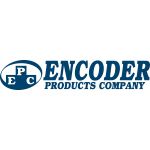New Technology Uses CNC to Drop Metal 3D Printing Costs
Computer scientists design flat sheets that transform themselves into smooth-surfaced, free-form objects
Volkswagen Taps Ultimaker for Customized Tool Production
Pragmatism Pervades Smart Factory Floor
GE Additive creating world's largest laser-powder additive machine
Augury Secures $17 Million Series B Funding Round to Power the Future of IIoT
The Triumphant Rise Of 3D Printing: Good News For Commercial Property?
CONSTRUCTION OF 3D-PRINTED BIKE BRIDGE BEGINS IN EINDHOVEN
How This $28 Million Startup Hopes to Save the World With 3D Printing
PRODWAYS GROUP PRESENTS ITS NEW RAPID ADDITIVE FORGING TECHNOLOGY FOR THE 3D METAL PRINTING OF LARGE PARTS
How Trump Can Make Apprenticeships a Hit
Three promising IIoT platform options aim to improve manufacturing
ZVerse: The 3D Printing Giant Looking To Design A New Content Category
IIoT And The CyberThreat: A Perfect Storm Of Risk
A 3D-printed rocket engine just launched a new era of space exploration
Records 931 to 945 of 1284
First | Previous | Next | Last
Featured Product

Datanomix Production Monitoring
Manufacturing and Automation - Featured Company

